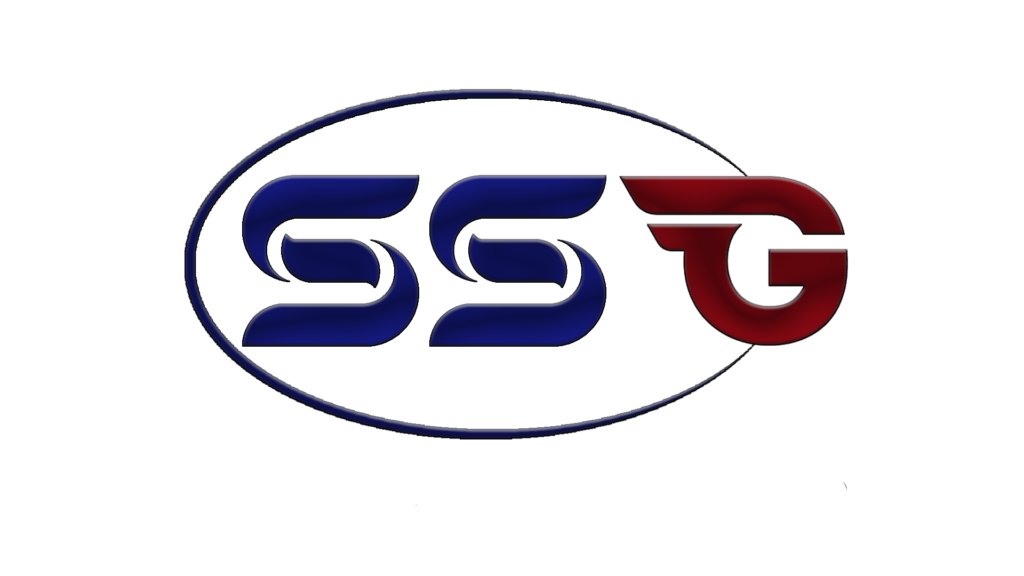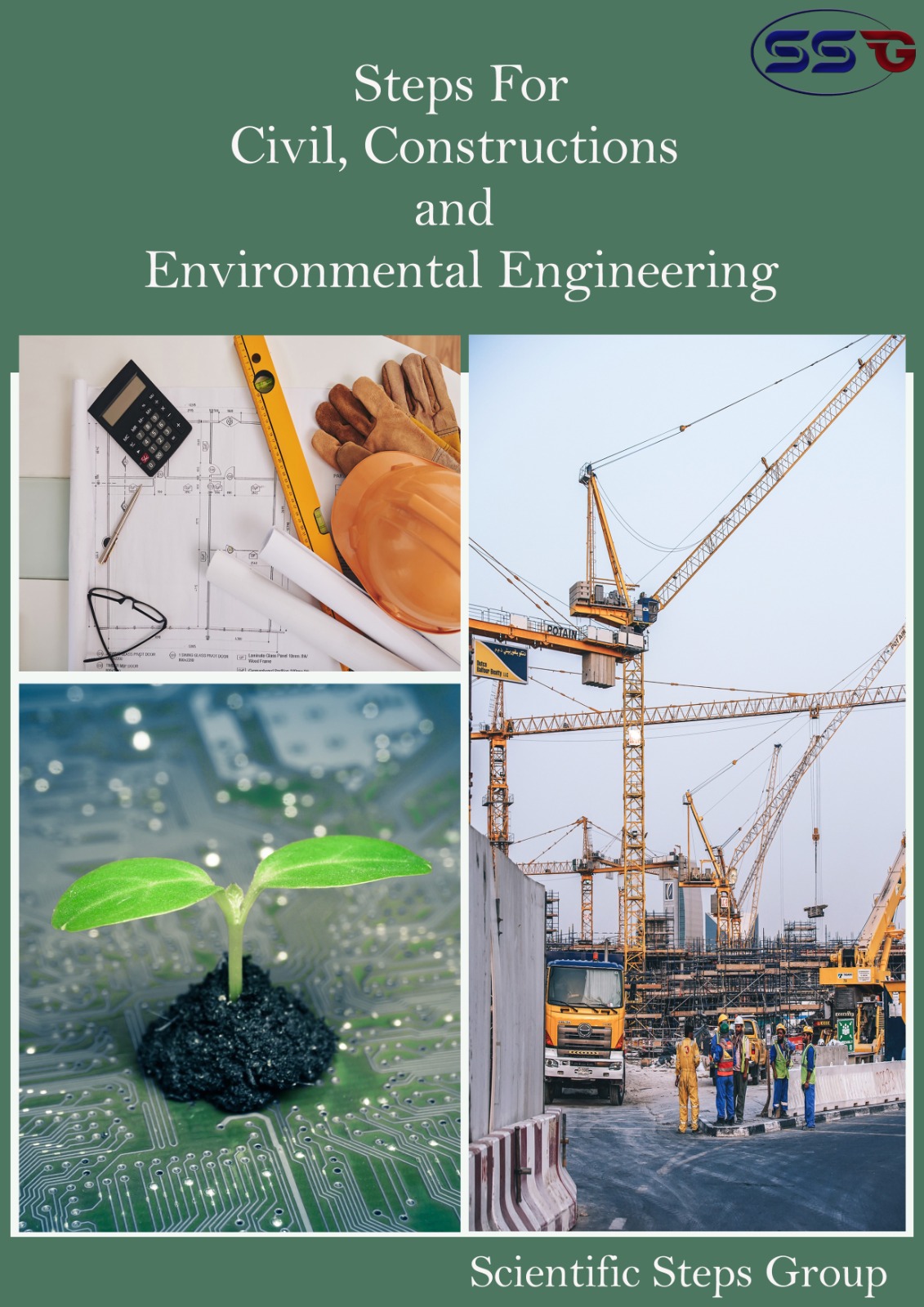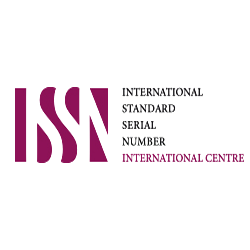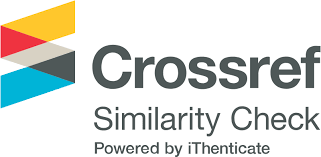
JOURNAL OF GENERAL MECHANICAL ENGINEERING is an international peer-reviewed academic journal sponsored by the Scientific Steps Group (SSG).is an international, scientific, peer-reviewed, open access journal published bimonthly online.

In order to foster quick communication and interaction between academics, scientists, and engineers in the field of mechanical engineering, JOURNAL OF GENERAL MECHANICAL ENGINEERING aims to provide a forum for a wide range of high-quality academic publications. Original research pieces, reviews, and feature stories are all published in the publication. The journal covers all of the main subfields of mechanical engineering, such as (but not limited to): machines and mechanisms, gears and transmissions, mechanical system dynamics, mechanical structures and stress analysis, tribology and surface technology, mechanical design and bionics, machining processes and technologies, manufacturing automation, precision engineering, mechatronics and embedded systems, micro/nano manufacturing and systems, robotics, sensing, MEMS, and green manufacturing.
Additive manufacturing; Advanced materials and processing; Assembly; Biomedical manufacturing; Bulk deformation processes (e.g., extrusion, forging, wire drawing, etc.); CAD/CAM/CAE; Computer-integrated manufacturing; Control and automation; Cyber-physical systems in manufacturing; Data science-enhanced manufacturing; Design for manufacturing; Electrical and electrochemical machining; Grinding and abrasive processes; Injection molding and other polymer fabrication processes; Inspection and quality control; Laser processes; Machine tool dynamics; Machining processes; Materials handling; Metrology; Micro- and nano-machining and processing; Modeling and simulation; Nontraditional manufacturing processes; Plant engineering and maintenance; Powder processing; Precision and ultra-precision machining; Process engineering; Process planning; Production systems optimization; Rapid prototyping and solid freeform fabrication; Robotics and flexible tooling; Sensing, monitoring, and diagnostics; Sheet and tube metal forming; Sustainable manufacturing; Tribology in manufacturing; Welding and joining.
JOURNAL OF GENERAL MECHANICAL ENGINEERING publishes archival-quality papers in the areas of gas and steam turbine technology, nuclear engineering, internal combustion engines, and fossil power generation. It covers a broad spectrum of practical topics of interest to industry. Subject areas covered include: thermodynamics; fluid mechanics; heat transfer; and modeling; propulsion and power generation components and systems; combustion, fuels, and emissions; nuclear reactor systems and components; thermal hydraulics; heat exchangers; nuclear fuel technology and waste management; I. C. engines for marine, rail, and power generation; steam and hydro power generation; advanced cycles for fossil energy generation; pollution control and environmental effects.
Multiphase flows; Pumps; Aerodynamics; Boundary layers; Bubbly flows; Cavitation; Compressible flows; Convective heat/mass transfer as it is affected by fluid flow; Duct and pipe flows; Free shear layers; Flows in biological systems; Fluid-structure interaction; Fluid transients and wave motion; Jets; Naval hydrodynamics; Sprays; Stability and transition; Turbulence wakes microfluidics and other fundamental/applied fluid mechanical phenomena and processes.
All articles published in JOURNAL OF GENERAL MECHANICAL ENGINEERING are published in full open access. An article processing charge (APC) of 1000 USD applies to papers accepted after peer review.
This article processing charge is to cover the costs of peer review, copyediting, typesetting, long-term archiving, and journal management.
Local VAT or Sales Tax will be added if applicable.
Submitted papers should be well formatted and use good English. Authors may use SSG’s English editing service prior to publication or during author revisions.
You can read more about Article Processing Charges (APC) of SSG’s Journals.
1. JOURNAL OF GENERAL MECHANICAL ENGINEERING is an internationally recognized publication in the field of civil engineering and infrastructure. This scientific journal features peer-reviewed, open access articles and is published bimonthly by SSG.
2. Determine the type of article you wish to submit:
• Research Article/Original Research: A complete description of original research findings.
• Letters/Short Reports/Communications: Brief descriptions of research findings.
• Review Article: A comprehensive summary of a topic that identifies and summarizes the results of original articles on the topic. Review articles may include, but are not limited to, scoping reviews, systematic reviews, critical reviews, literature reviews, and meta-analyses.
• Case Report: A descriptive, exploratory or explanatory analysis of a person, group, or event.
• Viewpoint/Opinion: An essay presenting an opinion on a specific topic, which may sometimes be controversial.
3. Ensure the originality of your manuscript by checking it for plagiarism using a plagiarism checker. The maximum similarity rate allowed in the STEPS Journal of Civil & Constructions & Environmental Engineering is 20%. Additional information regarding publishing ethics, including plagiarism, can be found in the Publication Ethics
4. Prepare your manuscript using the Microsoft Word Template
5. Submit your manuscript online through the submission website. The submitting author, who is typically the corresponding author, is responsible for the manuscript during the submission and peer-review process. The submitting author must confirm that all eligible co-authors have been included in the author list and have approved the submitted version of the manuscript. All co-authors can view the manuscript details in the submission system by registering and logging in using the email address provided during manuscript submission.
6. Manuscript presentation:
6.1. Formatting a Manuscript for Submission
a. Writing Style: Manuscripts must be written in clear, concise English and should be typed using a Times New Roman font, size 12 pt. Please use 1.5 line spacing for all materials. The total length of the paper, including text, tables, and figures, should not exceed 25 pages. Tables and figures should be placed within the text.
b. Formatting: Manuscripts should not include headers, footers, line numbers, notes, or footnotes. The final manuscript file size should not exceed 3 MB.
c. Scientific Ethics: The manuscript should follow ethical standards in scientific writing, including:
• Ensuring that all individuals who made significant contributions to the research are included as authors and those without significant contributions are excluded.
• Avoiding plagiarism by properly referencing sources and rephrasing as necessary.
• Taking caution regarding the novelty and copyrights of others.
6.2. Manuscript Structure:
A. Title Page: The title page should include the following elements:
i. Title: The title should be informative, meaningful, specific, and concise. It should avoid unnecessary jargon, abbreviations, and detail.
ii. Author Names: The full names of all authors should be provided.
iii. Author Affiliations: Institutional full addresses for all authors should be included.
iv. Corresponding Author: The name and email address of the corresponding author should be specified and marked with an asterisk (*). The corresponding author is responsible for any disputes arising from publication.
v. Abstract: The abstract should be limited to 250 words and should provide an overview of the research objectives, methodology, results, and conclusions.
vi. Keywords: Five selective and appropriate keywords should be included for indexing purposes. Avoid uncommon abbreviations and general terms.
Note: No other subheadings should be included in the manuscript.
B. Main Text
Original Investigations and Brief Reports typically comprise five sections: Introduction, Materials, Methods, Results, and Discussion.
i) Introduction
• This section provides the necessary context for the research work by presenting background information in three to four paragraphs. The introduction should explain the motivation and objectives of the study based on the type or category of information being presented. It should not include:
• A description of methods, results, or conclusions other than a brief outline of what was done and achieved in the final paragraph.
• Information on data collection and analysis methods.
• Brief terms of what was achieved.
• An extensive review of the field.
• An disproportionate citation of the author’s own work, the work of colleagues, or work that supports their findings while ignoring contradictory studies or work by competitors.
ii) Materials and Methods/Methodology
• This section should provide full details that would allow competent workers to replicate the experiment. The materials section should specify the exact technical specifications, quantities, and sources or methods of preparation. The methods section should describe the chronological order in which the study was carried out and should be brief yet informative. The section should clearly explain the study process and structure, including the materials used, the design of the experiment, the protocol for recording data, and the data analysis methods.
• Subheadings should be provided for each category, method, procedure, study area, or analysis used.
• Most of the section should be written in the past tense using passive voice, and results should not be included.
iii) Results/Case Studies
• This section presents the experimental data to the reader and is the most significant part of a paper. The results should be presented in tables and figures and each group of tables and figures should be introduced in a separate paragraph, noting the overall trends and data points of particular interest. Key statistics, such as the number of samples (n), the index of dispersion (SEM, SD), and the index of central tendency (mean, median, or mode), should be stated without reference for experimental studies. Any statistical analysis performed should be indicated and specific statistical data, such as p-values, should be included.
• The section should be short, clearly presented, and free from discussion.
• Tables and figures should be used to organize the data systematically, with tables showing exact values and figures showing trends or relationship effects.
• Figures and tables should be easy to understand without the need for reference to the text.
• The same information should not be presented in both a table and a figure.
• A textual representation of the key findings should be provided with each table and figure, using different tenses to give different information in the results section.
• Each table and figure presented in the paper should be referred to in the results section without reference.
iv) Discussion
• The discussion section is often the most challenging to write, but it should be straightforward if the previous sections have been properly constructed. The discussion should begin with a brief paragraph that provides an overview of the work and summarizes the most important findings. If the study characterized a phenomenon by studying specific effects, the results should be used to describe each effect in separate paragraphs. If the study presented a hypothesis, the results should be used to construct a logical argument to support or reject the hypothesis. If the study had three main objectives, the results should be used to address each of these objectives.
• The discussion should present the principles, relationships, and generalizations shown by the results, rather than simply reiterating the results.
• Exceptions or lack of correction should be pointed out, and unsettled points should be defined.
• The author’s results and interpretations should be.
vii) References
• All references cited in the text should be included in the References section. Careful consideration should be given to the selection of references, ensuring that they include relevant and key sources within the field as well as previous studies that support or provide context for the present work. References should not be included for the purpose of merely citing specific authors or journals, unless they are relevant to the current study. Previous publications from the author’s laboratory may be appropriate to cite. The references should be formatted according to the APA (7th edition) style.
• Examples of different reference types include:
Journal Articles: Afrianto (2018) “Being a Professional Teacher in the Era of Industrial Revolution 4.0: Opportunities, Challenges and Strategies for Innovative Classroom Practices,” English Language Teaching and Research, 2(1), 1-13.
Albantani, A. M., & Madkur, A. (2017) “Musyahadat Al Fidyu: Youtube-Based Teaching and Learning of Arabic as Foreign Language (AFL),” Dinamika Ilmu, 17(2), 291-308.
Books: McKibbin, B. (2007) Deep Economy: The Wealth of Communities and The Durable Future, New York: Times Book/Henry Hold and Co.
Panitch, L., & Gindin, S. (2012) The Making of Global Capitalism: The Political Economy of American Empire, London: Verso.
Book Chapters: Pigg, K. E., & Bradshaw, T. K. (2003) “Catalytic Community Development: A Theory of Practice for Changing Rural Society,” In Challenges for Rural America in The Twenty-First Century, edited by D. L. Brown & L. E. Swanson, Pennsylvania State University Press.
Regulations and Laws: Law Number 23 of 2011 concerning Zakat Management (2011, November 25), State Gazette of the Republic of Indonesia Year 2011 Number 115, Jakarta.
Law Number 5 of 1984 concerning Industry (1984, June 29), State Gazette of the Republic of Indonesia Year 1984 Number 22, Jakarta.
Theses: Choiri, A. (2021) Pemberdayaan Pemulung Melalui Pengelolaan Sampah Plastik di Medayu Utara Rungkut Surabaya [Thesis], UIN Sunan Ampel Surabaya, Surabaya.
Erizal, Y. (2011) Analisa Pelaksanaan Kemitraan Anak Angkat Bapak Angkat (ABA) dalam Usaha Agribisnis Kelapa Sawit di PT. GMP Kec. Pasaman Kabupaten Pasaman Barat [Thesis], University if Andalas, Padang.
Internet Sources: Jenkins, R. (2018, January 7) “Generation Z vs. Millennials: The 8 Differences You Need to Know,” HR Daily Advisor. Retrieved from https://hrdailyadvisor.blr.com/2017/09/25/generation-z-vs-millennials-8-differences-need-know/.
Maritime Security Agency of the Republic of Indonesia. (2021, June 25) “Amerika Serikat dan Indonesia Bangun Pusat Pelatihan Maritim,” Maritime Security Agency of the Republic of Indonesia. Retrieved from https://bakamla.go.id/publication/detail_news/amerika-serikat-dan-indonesia-bangun-pusat-pelatihan-maritim.
C. Final checklist for submission
Before submitting the manuscript for publication, it is imperative for the authors to confirm the following details have been meticulously considered:
• The title page must accurately reflect the full title, as well as the names, designations, and institutional affiliations of all authors, along with a valid email address for future correspondence.
• The abstract must be succinct and structured, not exceeding 250 words.
• References must be cited in accordance with the APA (7th edition) style guidelines as stated in the Instruction to Authors section.
• Ensure that the headings of tables, their numbers, and captions for illustrations are present, with no repetition of information.
• Ensure that all photographs and illustrations are of high resolution, along with their respective captions.




An independent academic publisher with an editorial team including many of the top researchers in the world. SSG publishes research, review, and case report articles in double-blind, peer-reviewed, open access scientific and academic journals.
Copyright © 2025 Scientific Steps International Publishing Services LLC (Dubai – United Arab Emirates)